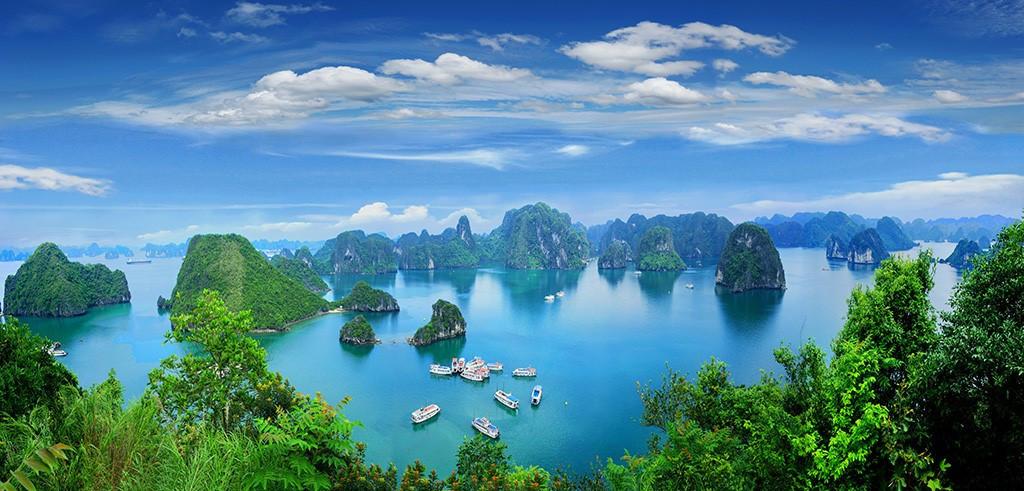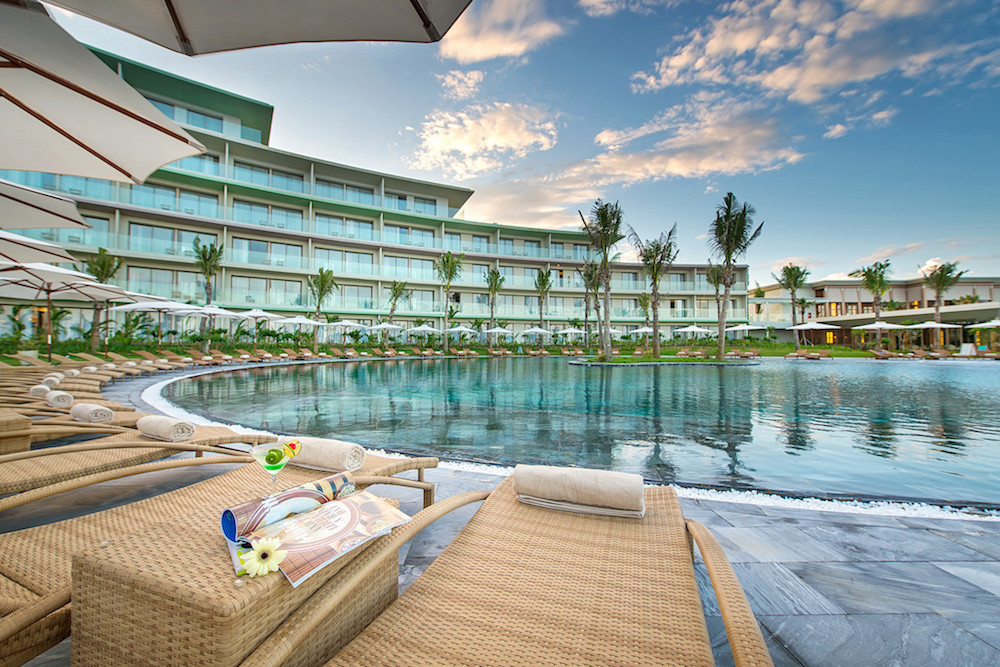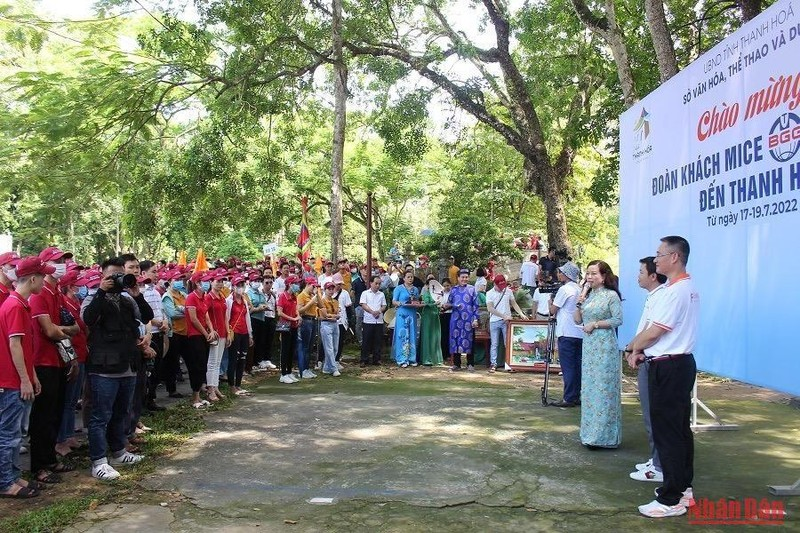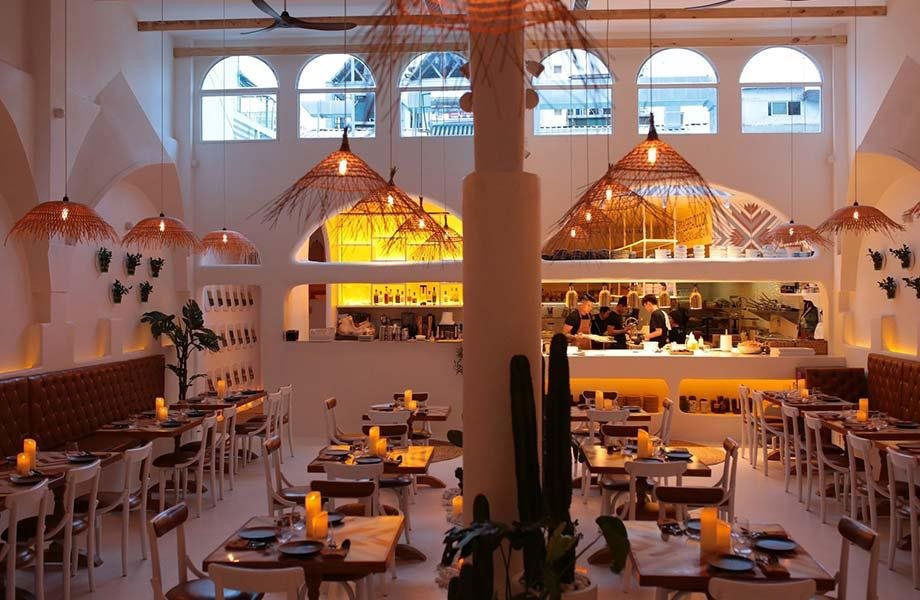How was Ha Long Bay recognized by UNESCO as a world heritage site for the second time in terms of geomorphological value?
Twenty years ago, on December 2, 2000, Ha Long Bay had the honor of being recognized by UNESCO as a world natural heritage site for the second time because of its outstanding overall value in geology and geomorphology. On this occasion, the Tourism Information Center would like to present the article of Mr. Nguyen Van Tuan - Former Head of Ha Long Bay Management Board on this memorable event.
December 2 this year marks the 20th anniversary of the recognition of Ha Long Bay by UNESCO as a World Natural Heritage Site for the second time because of its outstanding global value in geology and geomorphology.
Witnessing and directly participating in the preparation and nomination of this recognition by applying for policies, conducting basic research, preparing submissions and advocacy, attending international meetings In addition to witnessing the moment when Ha Long Bay was nominated at the 24th Plenary Session of the World Heritage Committee Meeting in Cain City, Australia, I still feel happy and lucky every time I remember that time. this. These are the memories that will never be forgotten in a lifetime.
On the 20th anniversary of this event, I would like to revisit with you the process of preparing this work, but first, it is necessary to recall the events that took place before.
On November 16, 1972, at the 17th session of the UNESCO General Assembly, the International Convention for the Protection of the World Cultural and Natural Heritage was adopted with the aim of calling on all countries of the world to The world with its resources and actions unite to protect and promote the cultural and natural heritage of outstanding world value. In 1977, Vietnam joined this convention, but it was only 16 years later, in 1993, that the first world cultural heritage, the Hue Monuments Complex, was recognized. And one year later, we have the second world heritage and the first natural heritage, which is Ha Long Bay, which was inscribed by UNESCO on the world heritage list because of its exceptional value in terms of landscape. aesthetics.
This event has a special significance for Quang Ninh province as well as for Vietnam, it affirms the stature and overall value of Ha Long Bay, which is on the list of the most prestigious heritages in the world. must be protected and honored, opening up great opportunities to exploit, develop tourism, promote the image and brand of Quang Ninh in particular and Vietnam in general. However, this event also placed great responsibility on the Party Committee, government and management agencies on how to exploit and promote the value of a world heritage site while protecting its values and integrity in the context of increasing pressures of economic development, urbanization and lack of experience in heritage conservation.
Contributing to this process of preparing and recognizing documents, I feel it necessary to mention the special merits of two individuals, Mr. Nguyen Thanh Sy, then Director of the Quang Ninh Department of Culture and Information, and Mr. Nguyen Tat Dung, the Chairman of the Quang Ninh Provincial People's Committee during this period. With the help of the Department of Museum Conservation - Ministry of Culture and Information and the UNESCO Cultural Department of the Ministry of Foreign Affairs, the work of preparing the documents and lobbying for international recognition went smoothly. It is also worth mentioning the contributions of Mr. Truong Quoc Binh who was then Deputy Director of the Department of Museum Conservation and Mr. Le Kinh Tai, Secretary General of the Vietnam National Commission for UNESCO and Director of the UNESCO Department of Culture. At that time, I was working at the Department of Culture and Information of Quang Ninh as the deputy director of the department, assisting Mr. Nguyen Thanh Sy.
Immediately after the ceremony of announcing and receiving Ha Long Bay as a world heritage site, solemnly held on April 25, 1995 at the Vietnam-Japan Cultural House, Quang Ninh Province ordered to promote the conservation and promotion of the value of Ha Long Bay. The value of the heritage meets the requirements of the new situation, including the proposal to the government to authorize the establishment of the Ha Long Bay Management Board under the Provincial People's Committee. After being approved by the government, on December 9, 1995, the Chairman of the Provincial People's Committee, Nguyen Tat Dung, signed a decision establishing the Ha Long Bay Management Board with the main function of advising and assisting the Provincial People's Committee in the management of Ha Long Bay. preserve and promote the value of Ha Long Bay World Natural Heritage. This decision is accompanied by the decision to appoint me as the head of the Ha Long Bay Management Board.
Accepting this quest was a total surprise for me, both excited and nervous. Happy that it is an interesting job that will give me a lot of opportunities to go out into the world and learn a lot, worried because it is so new, I have never been prepared and experienced before. At the beginning of its establishment, the Ha Long Bay Management Board had only ten people with empty hands, no seat, no transportation and no small motor boat.
Just like that, more than a year after its creation, we have defined a roadmap and the main priority tasks to be accomplished to propose them to the provincial party committee and the provincial people's committee for decision. These axes include:
1) Propose to the Provincial People's Committee to issue a provisional regulation on the conservation and promotion of the world heritage value of VHL, a regulation on the functions, duties, powers and organizational structure of the Management Board;
2) Conduct surveys, basic research, publish and disseminate documents on VHL
3) Propose to withdraw all caves and beaches and entrust them to the Management Board of the National Park for direct management;
4) Invest in the beautification of caves and beaches in the mountains and islands with tourism development potential;
5) Strengthen international and national cooperation, gradually raising the status of Ha Long Bay;
6) Strengthen the capacity, responsibility and authority of the Management Board.
In basic research, the Management Board is working to clarify the core values of VHL in terms of landscape aesthetics, geomorphology, cultural history, and biodiversity. Previously, there has been a lot of research on the above areas, but it is still small and not synchronized. At that time, there was the IUCN Office for Nature Conservation in Hanoi, and in 1995, the UNESCO Office in Hanoi was also established. It is a favorable condition for us to cooperate with these two very important international organizations.
While visiting and working with the IUCN office, I met Dr. Hans Friederich, the IUCN representative in Vietnam, who is a geologist and has a deep understanding of this issue. He is Dutch, cheerful and humorous. We had an open and enriching conversation. While discussing with him some plans and proposals for cooperation with IUCN, Hans told me: "You are very lucky to work for such a prestigious heritage as Ha Long. I am a geologist, as far as I know, besides the outstanding beauty of the landscape that UNESCO has honored, the geological and geomorphological values of Ha Long Bay are also very special. In the world, there is no such vast and majestic karst limestone area on the sea. It fully deserves to be recognized as a world heritage site in terms of geomorphology, I am ready to support you to do this work.
Hans' words touched my concerns and wishes. After this meeting, I went back to make a report and I was approved by Mr. Ha Van Hien, Chairman of the Quang Ninh Provincial People's Committee at that time. I exchanged ideas with Mr. Truong Quoc Binh from the Department of Museum Conservation, Ms. Nguyen Thi Hoi Secretary General and Mr. Pham Quang Tho Deputy Secretary General of the Vietnam National Committee of UNESCO. You are all very supportive and willing to help us. Then I went to work officially with Ms. Rosamaria Duran, Chief Representative of UNESCO Hanoi. Ms. Duran was very enthusiastic and supportive of this proposal. She told me that she would accompany us to our final destination. Ms. Rosamaria Duran is Canadian, a very frank and passionate person. Her first trip to Ha Long made a special impression on her: she loved Ha Long and the people of Ha Long. Later, she made great contributions to support us financially and professionally in the research and implementation of the Ha Long Ecomuseum development project. The project was approved by Quang Ninh province and approved by the Prime Minister Pre-feasibility project, unfortunately it was not pursued as planned.
After receiving support from the leaders of Quang Ninh Province, the Ministry of Culture and Information, the Vietnamese National Committee for UNESCO, and the UNESCO and IUCN offices in Hanoi, we began promoting this work in the summer of 1998. We proposed that UNESCO support a small project to invite international and national experts to Ha Long to investigate, research and make a scientific assessment. Dr. Hans and Mrs. Duran helped to contact, invited Mr. Tony Walthamt, famous professor of geomorphology at Royal Trent University in Nottingham, UK to Ha Long to work and study for 3 weeks with the support of Dr. Tran Duc Thanh - Sub-Institute of Oceanography in Hai Phong. My colleagues and I directly participated in the Ha Long survey for several days with the delegation. It was also the time when we learned and understood more about the geology and geomorphology of Ha Long.
Fortunately for us, before that, in the summer of 1997, as part of a UNESCO-funded project on capacity building in heritage management for the Board of Management, we were welcomed and directly listened to by Dr. Ish Warent who was then the Deputy Director of the World Heritage Centre directly in charge of the natural heritage field to give a lecture. The World Heritage Centre is a specialized and permanent body of the World Heritage Council. When we took Mr. Ish Warent to visit Ha Long, he was amazed and impressed by the beauty of Ha Long. This trip later helped us to become close friends and the review and evaluation of Ha Long Bay's application for recognition for the second time was very convenient. Dr. Ish Warent is a Sri Lankan who later became the director of the World Heritage Center. We are both retired now but still keep in touch.
More than a month after the Ha Long survey, Professor Tony Waltham sent a report on the geological and geomorphological assessment of VHL to the Quang Ninh Provincial People's Committee, the Board of Management, UNESCO and IUCN offices in Hanoi and also sent it to the Quang Ninh Provincial People's Committee for the World Heritage Centre in Paris. When we read this document, we felt a breath of pride and emotion. The report is only about 40 A4 pages long, but it contains a very comprehensive and in-depth assessment of the geology and landscape of Ha Long Bay. The report reads:
Ha Long Bay has been recognized as a World Heritage Site for its unique landscape value. The landscape value of Ha Long Bay probably needs no further discussion. The beautiful mountains rising above the calm sea of the bay create a magnificent natural setting.
At the same time, it should be recognized as a unique heritage of geological and geomorphological value in the Karst limestone region. Ha Long Bay is an example of the world's most important and strongest development in terms of karst tower landscape that has been submerged by the sea. This heritage area is characterized by both fenglin and fengcong karst regions. It is comparable to the karst towers in Yangshua (Gulin) area in Guangxi, China. But Ha Long Bay is on the sea. Ha Long Bay has been formed and enlarged due to the process of geomorphological evolution since the appearance of the secondary plain with the characteristic cuts on the limestone hills at the basic water levels eroded by the sea.
Nothing more can be said, we can confirm that Ha Long Bay is a karst landscape of global significance with the fundamental basis of geosciences. Ha Long includes all the Fengcong, Fenglin and caves that are still developing. Along with the landscape value, the geological value of Ha Long should be preserved for the benefit of mankind.
After receiving Professor Tony Waltham's report, on February 25, 1999, the World Heritage Centre in Paris sent a letter to the People's Committee of Quang Ninh Province, the National Committee of UNESCO Vietnam and the Ha Long Bay Management Board to expedite the preparation of documents submitted to UNESCO for the recognition of the outstanding global value of the Ha Long Bay karst area.
In July 1999, the dossier submitted to the World Heritage Committee for the recognition of Ha Long Bay for the second time for its geological value was completed, including:
- Report naming VHL as a World Heritage site in terms of geomorphological value.
- Report by Professor Tony Waltham.
- Additional report on the geological history of Ha Long Bay by Dr. Tran Duc Thanh.
- Summary of the Master Plan for the Conservation and Development of Ha Long Bay until 2020.
- Legal documents of the Government of Vietnam and Quang Ninh Province on the management and protection of Ha Long Bay.
- Brief report on the establishment and functions of the Ha Long Bay Management Board.
- Map of Ha Long Bay at 1:50,000 and 1:10,000 defining the boundaries of the protected areas.
- Films and positive clips on the landscape and geology of Ha Long Bay.
Unlike the first time, this time we are preparing the Profile thoroughly, proactively and meeting all the requirements of the World Heritage Center.
By the way, I would like to thank to Mr. Len Took. He is British, principle former of a high school in London, after his retirement, he applied to volunteer in Vietnam and was introduced by the SNV organization in Hanoi to work on the VHL board. During the 3 years of working with us, he made many contributions in teaching English, editing English documents, working directly with us with experts and researching scientific documents to write a report to submit to UNESCO for recognition of VHL as a World Heritage Site on geomorphology. This report was reviewed by many agencies and approved by the World Heritage Centre immediately with almost no corrections. My colleagues and I always thank him for his contribution. Unfortunately, after I had the opportunity to go to London, I didn't have the opportunity to see him again because he passed away 6 years ago.
The above report was signed by the Chairman of Quang Ninh Provincial People's Committee Ha Van Hien, Professor Luu Tran Tieu, Vice Minister of Culture and Sports, and Vice Minister of Foreign Affairs and Chairman of the Vietnamese National Commission for UNESCO Nguyen Dy Nien, and was sent to the Vietnamese Ministry of Culture, Sports and Tourism, UNESCO Hanoi Office. From there, the application is sent to the World Heritage Centre in Paris. A few days later, we received a reply from Paris: The World Heritage Centre Office has received the file, valid and clear, the next steps will be taken.
At the 23rd Conference of the World Heritage Committee held in the city of Marrakech, Morocco, in early December 1999, the World Heritage Committee officially confirmed the profile of Ha Long Bay and included it in the program of evaluation, profiling and recognition of the geological value of Ha Long Bay in 2000. To attend the Marrakech conference, we had to fly from Hanoi to Paris, from there to Casablanca, the largest city in Morocco on the Atlantic coast, and fly to Marrakech. It is a very special city, deep inside Morocco, the whole city is covered with a pure brown color. The Vietnamese delegation attending this conference included Mr. Truong Quoc Binh, Mr. Pham Quang Tho, Ms. Lam, Vice President of Quang Nam and myself. At this conference, the ancient city of Hoi An and the sanctuary of My Son were recognized as world heritage sites. Ish Warent informed me directly about the status of the VHL file.
Comme prévu, en mars 2000, le professeur Elery Hamilton Smith, expert australien et membre de l'Union internationale pour la conservation de la nature (UICN) a été envoyé à Ha Long pour vérifier l'authenticité du profil, sa valeur géologique ainsi que l'évaluation de l'état de la gestion et faire des recommandations.
Le rapport d'évaluation du professeur Elery Hamilton Smith se lit comme suit :
Tous les documents le confirment, la baie d'Ha Long est la plus grande zone du monde avec une topographie calcaire érodée par l'eau de mer, c'est un exemple typique du paysage océanique le plus riche, le plus diversifié et le plus complexe. . Cela a inévitablement conduit à la reconnaissance de la baie d'Ha Long dans la liste des sites du patrimoine mondial avec sa valeur paysagère exceptionnelle et unique. Inutile de dire que c'est le plus beau paysage marin du monde….
…En bref, c'est une diversité de grottes et d'autres formes de relief qui fournissent une précieuse réserve de données pour notre avenir, une compréhension de l'histoire du climat terrestre, des processus.La nature karstique dans un environnement complexe et l'histoire culturelle humaine en Asie de l'Est .
La baie d'Ha Long est l'une des plus grandes zones de calcaire karstique marin au monde. Seule la région de Yangshow en Chine s'est développée à une si grande échelle et ne peut être comparée qu'au site du patrimoine mondial de Wulingyuan également en Chine.
Cependant, la baie d'Ha Long est loin de ces zones, car elle montre clairement l'impact de l'érosion karstique par l'eau de pluie et l'intrusion d'eau de mer. Il existe quelques petites zones avec des paysages marins similaires, en Corée du Nord, aux Philippines et dans le parc national d'Ao Phangnga, en Thaïlande. Il n'y a pas d'autre région aussi diversifiée en géomorphologie que la baie d'Ha Long. Ainsi, la région est devenue célèbre et possède une industrie touristique développée.
Il s'agit de la proposition d'inscription de la baie d'Ha Long à être reconnue comme site du patrimoine mondial selon la norme (i), c'est une zone avec des processus géologiques exceptionnels en cours et des caractéristiques géomorphologiques exceptionnelles. En même temps, selon la norme (iii), cette est une zone avec un paysage naturel exceptionnel et une valeur esthétique particulière.
En juillet 2000, la réunion de mi-année du Bureau du Centre du patrimoine mondial à Paris proposait officiellement au Comité du patrimoine mondial de reconnaître la baie d'Ha Long comme patrimoine naturel mondial en raison de ses valeurs exceptionnelles en termes de ressources naturelles. et fonctionnalités.
Le 2 décembre 2000, lors de la 24e Conférence du Comité du patrimoine mondial tenue à Cairns City, Australie, après avoir écouté la présentation du Centre du patrimoine mondial et l'évaluation par l'UICN, le Comité du patrimoine mondial du patrimoine a officiellement décidé de reconnaître Ha Long Baie comme site du patrimoine mondial pour la deuxième fois selon la norme (i) de la Convention internationale sur le patrimoine mondial.
Témoin de ce moment, mon cœur a débordé d'émotion et de joie. J'aime évacuer tous les soucis et inquiétudes lorsque j'arrive à destination après un long voyage. Seuls moi et le Dr Truong Quoc Binh, directeur adjoint du Département de la conservation des musées et le professeur Amar Galla, professeur à l'Université de Canbera, expert du projet d'écomusée de Ha Long, assistaient à cette session. J'ai immédiatement appelé pour rapporter cette nouvelle au président de Quang Ninh, Ha Van Hien. Après ce voyage, Amar Galla m'a offert un voyage le long de la côte est de l'Australie.
On peut dire que la reconnaissance du Comité du patrimoine mondial est le résultat d'un processus de recherche et d'efforts de coopération internationale entre les agences du Vietnam, la province de Quang Ninh et le Comité du patrimoine mondial, le Centre du patrimoine mondial, l'UICN, le Bureau de l'UNESCO à Hanoï et des scientifiques. . Un voyage de trois ans entre la recherche fondamentale, le profilage, la recommandation, le plaidoyer international et la reconnaissance a été effectué presque sans problème, sans aucune utilisation du budget de l'État. Les dirigeants des agences centrales et Quang Ninh ont aidé et encouragé de tout cœur, des amis internationaux nous ont soutenus avec enthousiasme et nous ont soutenus très efficacement pour atteindre ce résultat et obtenir cette joie.
Le fait que Ha Long ait été reconnu par l'UNESCO pour la deuxième fois pour sa valeur géologique et géomorphologique affirme une fois de plus la valeur globale exceptionnelle de la baie d'Ha Long. La baie d'Ha Long n'est pas seulement célèbre pour la beauté magnifique et majestueuse de la mer et des îles, mais aussi un immense musée géologique, où se condensent les importants vestiges de la formation, du mouvement et du développement de la terre en forme de croûte de cette zone, quand on le regarde et qu'on y pense, on peut lire l'histoire tectonique de cette terre.
C'est un honneur pour nous aujourd'hui. Cependant, cela nous place également devant de nouvelles responsabilités dans la préservation des valeurs particulières de Ha Long pour les générations futures.
20 ans se sont écoulés depuis ce moment. La province de Quang Ninh a beaucoup fait pour Ha Long. Non seulement un site du patrimoine mondial, Ha Long est maintenant devenu l'une des sept nouvelles merveilles naturelles du monde. Ha Long est devenue une destination nationale et internationale. La ville d'Ha Long est devenue plus belle et une ville habitable sur les rives d'Ha Long.
En repensant à ces années, je me sens toujours chanceux et fier. J'aimerais qu'il y ait un jour.
Looking back on these years, I still feel lucky and proud. I wish that one day I could have a meeting with all the international and Vietnamese friends who participated in writing this story of Ha Long Bay.





